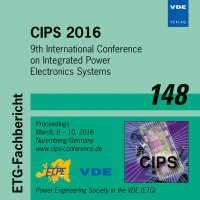Non-Destructive Assessment of Reliability and Quality related Properties of Power Electronic Devices for the In-Line Application of Scanning Acoustic Microscopy
Konferenz: CIPS 2016 - 9th International Conference on Integrated Power Electronics Systems
08.03.2016 - 10.03.2016 in Nürnberg, Deutschland
Tagungsband: CIPS 2016
Seiten: 6Sprache: EnglischTyp: PDF
Persönliche VDE-Mitglieder erhalten auf diesen Artikel 10% Rabatt
Autoren:
Brand, Sebastian; Naumann, Falk; Tismer, Sebastian; Boettge, Bianca (Fraunhofer Institute for Microstructure of Materials and Systems IMWS, Halle, Germany)
Rudzki, Jacek; Osterwald, Frank; Petzold, Matthias (Danfoss Silicon Power GmbH, Flensburg, Germany)
Inhalt:
The generation and conversion of high power based on electricity has been a highly pursued field of research and engineering for many years. The availability of new materials and technologies for generation, handling and conversion of high-power electricity has led to a broadening range of applications. As a consequence the demand on the achievable performances and the reliability increased drastically. Therefore, the current paper addresses the non-destructive assessment and evaluation of the occurrence and the propagation of defects employing scanning acoustic microscopy (SAM). The study aims at the definition of inspection parameters and setups for a standardized in-line-application of scanning acoustic microscopy in industrial manufacturing processes. The relevance and their influence of inspection parameters like the acoustic frequency, the focal length and the acoustic aperture are evaluated focusing on a comparable and reliable quality- and defect assessment. Sintered power electronic components (diodes and IGBT’s) have been inspected through the front and rear surfaces employing commercially available ultrasonic transducers for acoustic microscopy. Inspection parameters have been adjusted for optimized defect detection and imaging resolution with respect to the applicability to small variations in sample technology. Additionally, signal analysis is employed for the robust estimation of 2nd order quality parameters in order to evaluate thickness variations, substrate warpage, as well as poresizes and size distributions of sinter layers.


